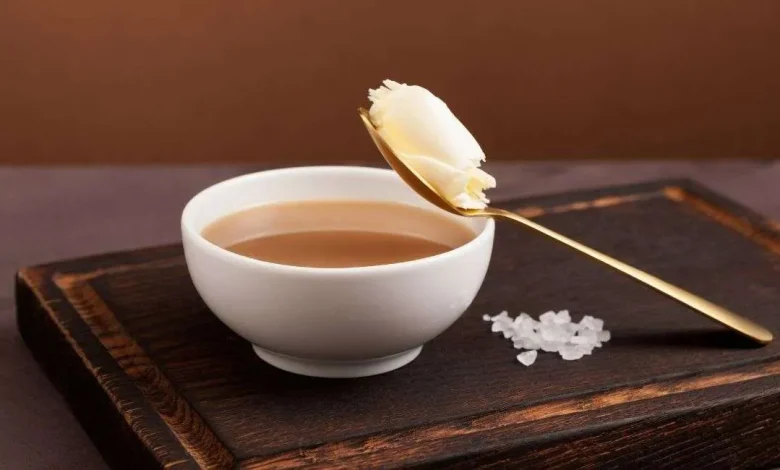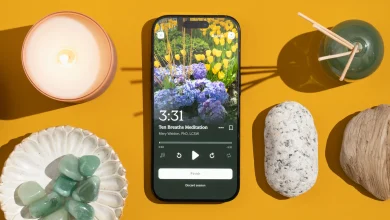How To Find and Try the Best Butter Tea in the Khumbu

The Everest Base Camp Trek is as much a sense of well-being, personal accomplishment, and achievement as testing one’s physical abilities. But for all the big picture talk of Mount Everest that looms perennially over it, there are countless palpable lessons in high-altitude living – largely through food – to be learned from local Sherpa culture. Top of my food list is butter tea (Po Cha): the lifeblood and staple for day-to-day survival—and stamina during long trails—in Nepal. This is not the sweet, milky tea of many parts of the world; it is a salty, rich, high-fat infusion.
Especially to anyone trekking the EBC distance – knowing where you can secure a good decent (especially if feeling down) cup of butter tea, could in fact save your soul. Due to its three important factors – hydration, calorific content & warmth, the very popular energy-giving drink makes even a simple liquid one of the most vital pieces on your Mt Everest Base Camp Packing List. Forget about the sugar high, this is an experience for a pepper unit, and you’ll have enough kick to climb up the Himalayas.
Get educated on your ingredients, yak butter to dzo butter
The tea is only as good as the butter used to make it — and where that butter comes from. Having said that, the real thing is made with yak (or Nak, to locals) butter – in these partit’sts called Yung when it comes from a female yak’s teats. This butter is cultured, and has a somewhat raucous, earthy, but for sure tangy flavor — deep (and calorific!) with the same amplitude I heard on that afternoon atop that chipped city stoop. Where Lots of people can access the EBC Trekking trail, one alternative version of this is Yak Butter (Dzo Butter – Jhong or Nak), and its presence is found in IiPodsparticularly low low-elevation towns like Place such as Phakding and Namche Bazaar. The butter of the hybrid animal yields a less bitter, less complex, and milder-flavored and energy-dilute oil than that constituent the pure yak. While having a stayover with a homestay, one simple polite inquiry about where the source of the butter was probably sufficient guidance towards this real superior mixture, which serves as liquid gold rocket fuel on this tough classic trek to Mt Everest.
Tasting Notes: What We’re Tasting From the Top
But a well-made cup of the most basic butter tea is an experience that rides between these warring elements, and very much has nothing to do with Western conceptions of what tea ought to be. For one thing, this primo version should release a potent earthy fragrance reminiscent of the lightly smoky scent of your friend’s lodge fire, combined with the intense, dried milk-acrid smell of yak butter. Its texture may actually be its most notable characteristic; it should be thick, opaque, and strongly oily, leaving an unmistakable film on the inside of your cup — and in your mouth. This greasiness is the signature of what your body craves at altitude.
Taste: And let’s talk about what my fancy pants snack tastes like. Very savory — NOT sweet at ALL. The first thing I taste is a sort of sharp saltiness, then the feeling of ground-burned-leaf-and-dark that is the tea leaves and yak butter starts to well up in my mouth as richly as any beef broth. Basically, it’s a low-drinking, high-calorie savory soup. This potent medicinal combo is not so much “unpleasant” as it might sound – in fact, it becomes one of those things that is almost absurdly comforting and instantly revitalizing the further you trek up EBC Trekking.
Butter Tea And Everest Base Camp Trek Cost: Budget Consideration
You will think of butter tea as a luxury to treat yourself now and again more than anything else, and trust me, a great high-calorie addition for boosting energy during a trek. There are 3 meals included in the package of the Everest Base Camp Trek (you normally pay more for more dishes, especially Po Cha). Image Move higher up the mountain, and you can expect the price to leap considerably. But consider this additional expense a small price to pay for more protection and more performance. This viscous, high-caloric hydration drink is one of the best non-medical countermeasures you can purchase against altitude elements in a bottle. And it’s an unimaginable indulgence that more than compensates for the price of any purchased snack or pop at 30,000 feet.
Customizing Your Butter Tea Experience
Though rich and flavorful enough to be sipped on its own, the traditional way to drink butter tea, as a Sherpa, proves bountiful when paired with tsampa, a roasted barley flour. It is a super-nourishing Himalayan trekking food to fuel your EBC Trek energy needs. They do this by pinching off a little tsampa and stirring it into hot butter tea until it becomes a doughy, high-calorie knead-by mass that you can eat by hand (presumably because when water is scarce, one often washes his hands). Most trekkers hate the taste; you’ll come to be very grateful for it after a few days of knawing on rock-hard, permafrosted biscuits and pantin’ up sides mountainsides on your way up to Mount Everest Base Camp Treksichen, but all you’re thinking’ will be how good another steamin’ hot cup tastes nestled in yer bare-y fists mate.
Drinking Etiquette inside the Khumbu
Ingesting butter tea in a neighborhood house or traditional motel is a possibility to virtually interact with the herpa subculture; however, there are some easy etiquette to examine. You have to hold the cup with your arms as a signal of appreciation. If there is one cultural principle worth remembering, it’s the never-ending refill. Your cup will usually be re-filled after you have drunk a single sip (or gulp! of very great kindness and generosity. It only stops when you, the guest, say stop. A potential signaling device for when you’re done: leaving the cup with a big gulp still to be drunk at its bottom. Otherwise, the host will just keep refilling it for you, but this way, they know you’re good and won’t be rude about pushing more away. You’ll love the unhurried, mindful pace of the tea ritual, a time for repose and warmth and talk—a basic necessity in the Himalayas.
Final Conclusion
Your Everest base camp trek will pound your body and bend your mind, but a great deal of its magic could derive from following the Khumbu people by hosting an expedition. Thus, butter tea is a potent symbol of this Sherpa vigor to subsist in such an adverse climate. And it is common sense, vital, and culturally rich. From the mysterious steam of a cup made in the traditional way out on the fringes of some lodge to the sucker punch it delivers in terms of pure fat and calories, Po Cha is a wonder. This article may contain affiliate links. This is Everest Himalayan literally on the go – flavor of the high altitude and adventure preserved in a bottle as vibrant as this pull at the peak of Mount Everest. Just make sure to get that one real, salty, nutrient-dense, and warming cup you’ll drink on the best hike of your life; it’s what keeps all journeys through the mountains golden and you grateful for local knowledge that ensures visits are possible.



